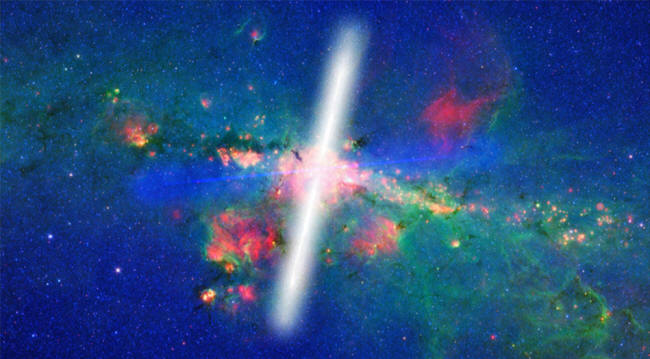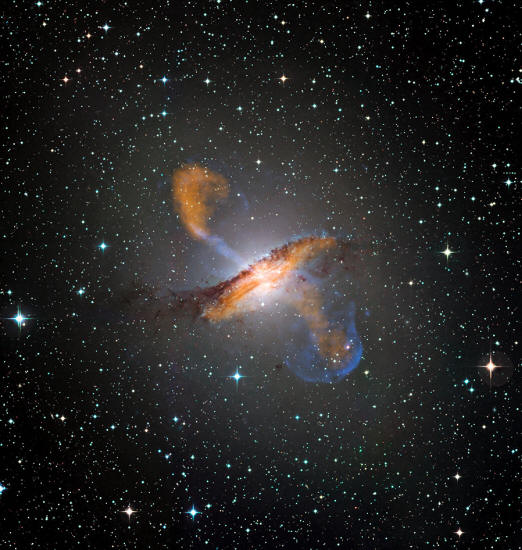|

by Jake Anderson
October 08,
2019
from
TheMindUnleashed Website

Nuclear Explosion Space
Image Credit: Flickr/Robert Sullivan
Scientists don't know the origins of the explosion
but say it was
so big it must've been caused
by nuclear
activity.
Scientists have generally believed that the supermassive
black hole at the center of our
galaxy,
Saggitarius A*
(Sgr A*), is relatively quiet and non-dramatic as far as black holes
go.
New data, however, suggests Sgr A*
has, in recent history, likely been responsible for a powerful and
anomalous astrophysical event that caused incomprehensibly expansive
blasts of energy and radiation to explode from either side of the
Milky Way's center.
Scientists say this event
occurred about 3.5 million years ago and would have been visible to
humanity's earliest ancestors.
A team of Australian and American researchers led by Joss
Bland-Hawthorn, director of the Sydney Institute for
Astronomy, collected data from the
Hubble Space Telescope showing that
the blast occurred in the vicinity of Sgr A* and produced a
cone-shaped blast of ionized energy and radiation, known as a
Seryfert flare, that extended
for 200,000 light years on either side and lasted for 300,000 years.

The event took place 63
million years after the extinction of the dinosaurs, when the
earliest humans, the
Australopithecines, roamed
Africa.
Astronomer Magda Guglielmo, who teaches at the University of
Sydney,
explained the significance of the
discovery:
"These new results
instead open the possibility of a complete reinterpretation of
its evolution and nature.
The flare event that
occurred three million years ago was so powerful that it had
consequences on the surrounding of our Galaxy.
We are the witness to
the awakening of the sleeping beauty."
Scientists still don't
know the exact origins of the explosion but the general consensus is
that it was simply too big to have been caused by anything other
than nuclear activity in the vicinity of Sgr A*...
The resulting "ionization
cones" likely looked like
titanic "lighthouse" beams and were
so powerful they even influenced the
Magellanic Stream of gas and dust
orbiting the Milky Way at a distance of 200,000 light years.
The role of black holes in shaping the evolution of galaxies is
still a young scientific pursuit.
Even though we're still
in the early days of understanding such cosmological models, new
data of cataclysmic black hole events allows the imagination to run
wild.
Our earliest ancestors would have had no earthly idea what they were
seeing when lighthouse-like beams appeared in the night sky.
Three and a half million
years later, we're just now starting to decode the extravagance
of the cosmos - and it's even more fantastical than any of the
early gods and archetypes.
When the
James Webb telescope - which will
be approximately 100 times more powerful than Hubble - launches in
2021, we may be in for delights beyond our wildest imagination...
|



